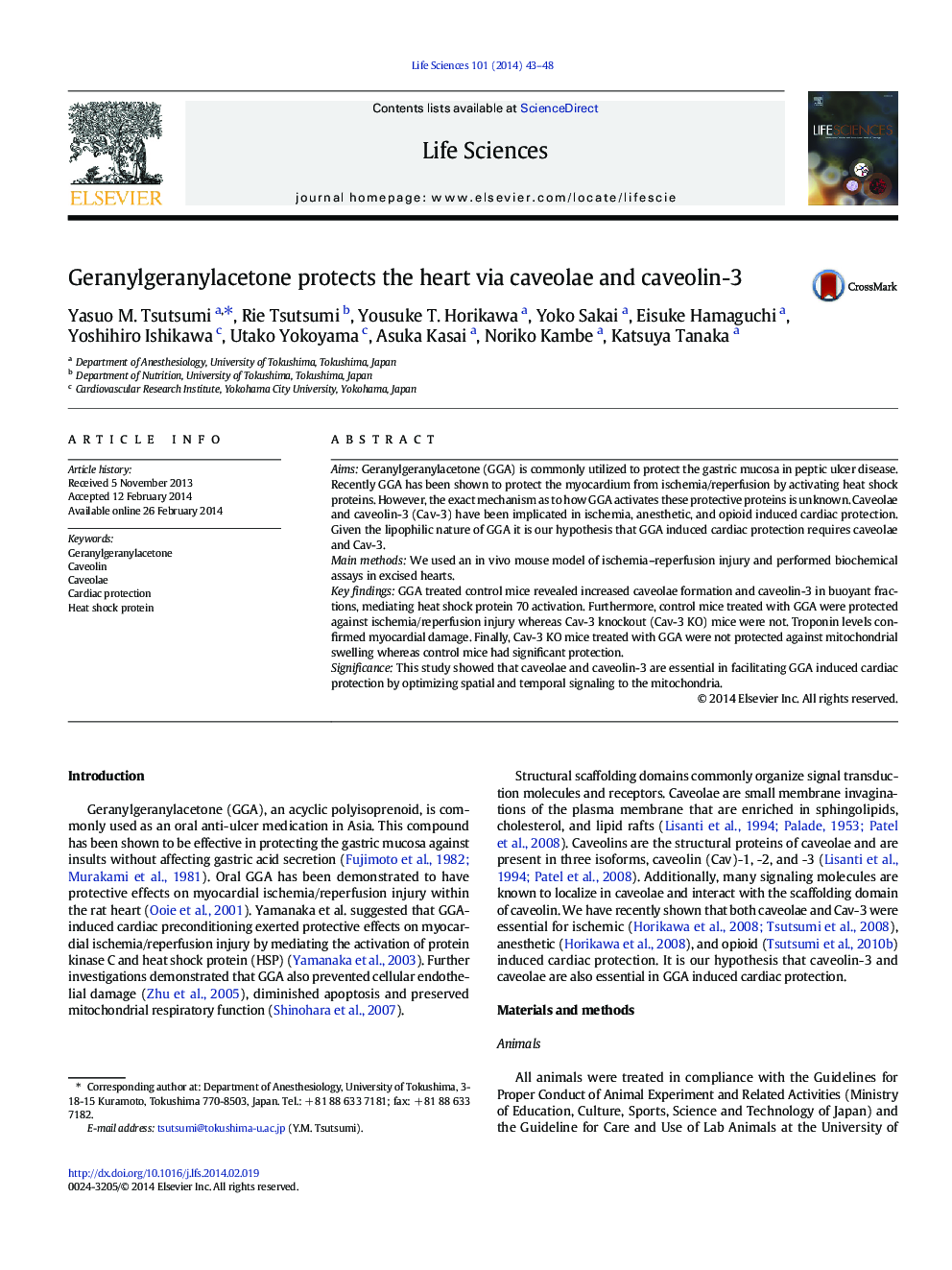| Article ID | Journal | Published Year | Pages | File Type |
|---|---|---|---|---|
| 2551240 | Life Sciences | 2014 | 6 Pages |
AimsGeranylgeranylacetone (GGA) is commonly utilized to protect the gastric mucosa in peptic ulcer disease. Recently GGA has been shown to protect the myocardium from ischemia/reperfusion by activating heat shock proteins. However, the exact mechanism as to how GGA activates these protective proteins is unknown. Caveolae and caveolin-3 (Cav-3) have been implicated in ischemia, anesthetic, and opioid induced cardiac protection. Given the lipophilic nature of GGA it is our hypothesis that GGA induced cardiac protection requires caveolae and Cav-3.Main methodsWe used an in vivo mouse model of ischemia–reperfusion injury and performed biochemical assays in excised hearts.Key findingsGGA treated control mice revealed increased caveolae formation and caveolin-3 in buoyant fractions, mediating heat shock protein 70 activation. Furthermore, control mice treated with GGA were protected against ischemia/reperfusion injury whereas Cav-3 knockout (Cav-3 KO) mice were not. Troponin levels confirmed myocardial damage. Finally, Cav-3 KO mice treated with GGA were not protected against mitochondrial swelling whereas control mice had significant protection.SignificanceThis study showed that caveolae and caveolin-3 are essential in facilitating GGA induced cardiac protection by optimizing spatial and temporal signaling to the mitochondria.
